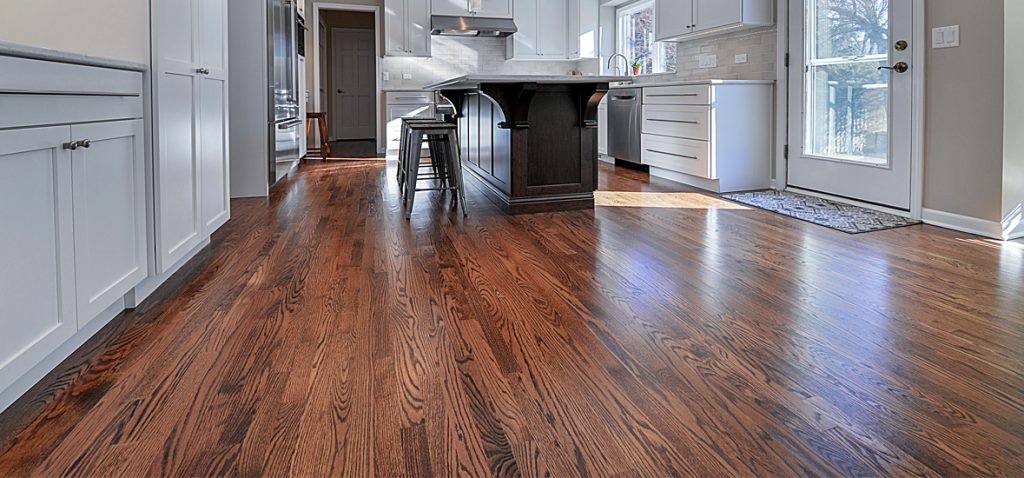Engineered wood flooring typically consists of three main layers: the wear layer, the core layer, and the backing layer. The wear layer is the topmost layer and is made of real wood. It can be sanded and refinished, just like traditional hardwood floors. The core layer, made of plywood or fiberboard, provides stability and durability. Finally, the engineered wood flooring backing layer adds extra support and moisture resistance.
Durability and Stability
One of the significant advantages of engineered wood flooring is its superior durability and stability compared to traditional hardwood floors. The multiple layers and cross-grain construction of engineered wood make it less prone to expansion and contraction caused by changes in temperature and humidity. This stability makes it ideal for areas with fluctuating moisture levels, such as kitchens and basements.
Wide Range of Styles and Finishes
Engineered wood flooring offers various styles, finishes, and wood species to suit every design preference. Whether you prefer the warm and rich tones of oak or the sleek and modern maple look, an engineered wood option is available. From traditional to trendy, you can find a style that complements your interior décor and enhances the overall aesthetic appeal of your space.

Installation Process and Versatility
Installing engineered wood flooring is simple and hassle-free, thanks to its innovative click-lock or tongue-and-groove installation systems. These systems allow for easy and secure installation, making it suitable for DIY enthusiasts. Engineered wood can be installed over various subfloors, including concrete, plywood, and hardwood floors. Its versatility extends to both residential and commercial settings.
Maintenance and Longevity
Engineered wood flooring is designed to be low-maintenance and long-lasting. Regular sweeping or vacuuming and occasional damp mopping are usually sufficient to keep it clean and looking its best. The wear layer can be refinished when needed, allowing you to refresh the appearance and extend the lifespan of your flooring. With proper care, engineered wood flooring can last for decades, making it a wise investment for your home.
Eco-Friendliness of Engineered Wood Flooring
For environmentally conscious homeowners, engineered wood flooring offers a sustainable and eco-friendly choice. Engineered wood preserves valuable timber resources by utilizing the top layer of real wood more efficiently. Additionally, the manufacturing process involves using less energy and generating fewer waste materials than traditional solid wood flooring. Look for products with certifications such as FSC or SFI to ensure responsible sourcing.
Cost Considerations
When comparing the cost of engineered wood flooring to traditional hardwood, it is essential to consider the long-term value. While engineered wood may have a slightly higher upfront cost, its durability and longevity make it a cost-effective option in the long run. Furthermore, the ease of installation can save you money on professional installation fees. Ultimately, the price will vary depending on wood species, finishes, and additional features.
Enhancing the Aesthetics of Your Space
Engineered wood flooring adds warmth, character, and natural beauty to any space. Its wide range of styles and finishes allows you to create a unique look that complements your interior design scheme. Whether you prefer a rustic farmhouse feel or a sleek contemporary ambiance, engineered wood flooring can be customized to suit your preferences and elevate the overall aesthetics of your home.


